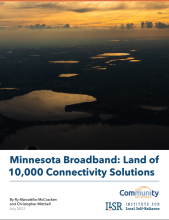Frameworks for the Future in Newark - Episode 511 of the Community Broadband Bits Podcast

This week on the podcast, Christopher is joined by Seth Wainer, the former CIO of the city of Newark, New Jersey. During the conversation, Seth shares his time with the city from 2013-2018. He talks about the progress the city made in improving local connectivity across different arenas, from cataloging existing assets, to pursuing both wired and wireless self-funded projects (to more than 100 buildings today), to putting in vendor-agnostic fiber in downtown development, to coordinating utility projects to lower costs.
Christopher and Seth end the conversation by talking about the importance and power of reframing the question of broadband access, including what happens when we think of telecommunications infrastructure as a sustainable public service rather than a luxury good.
This show is 35 minutes long and can be played on this page or via Apple Podcasts or the tool of your choice using this feed.
Transcript below.
We want your feedback and suggestions for the show-please e-mail us or leave a comment below.
Listen to other episodes here or view all episodes in our index. See other podcasts from the Institute for Local Self-Reliance here.
Thanks to Arne Huseby for the music. The song is Warm Duck Shuffle and is licensed under a Creative Commons Attribution (3.0) license.


